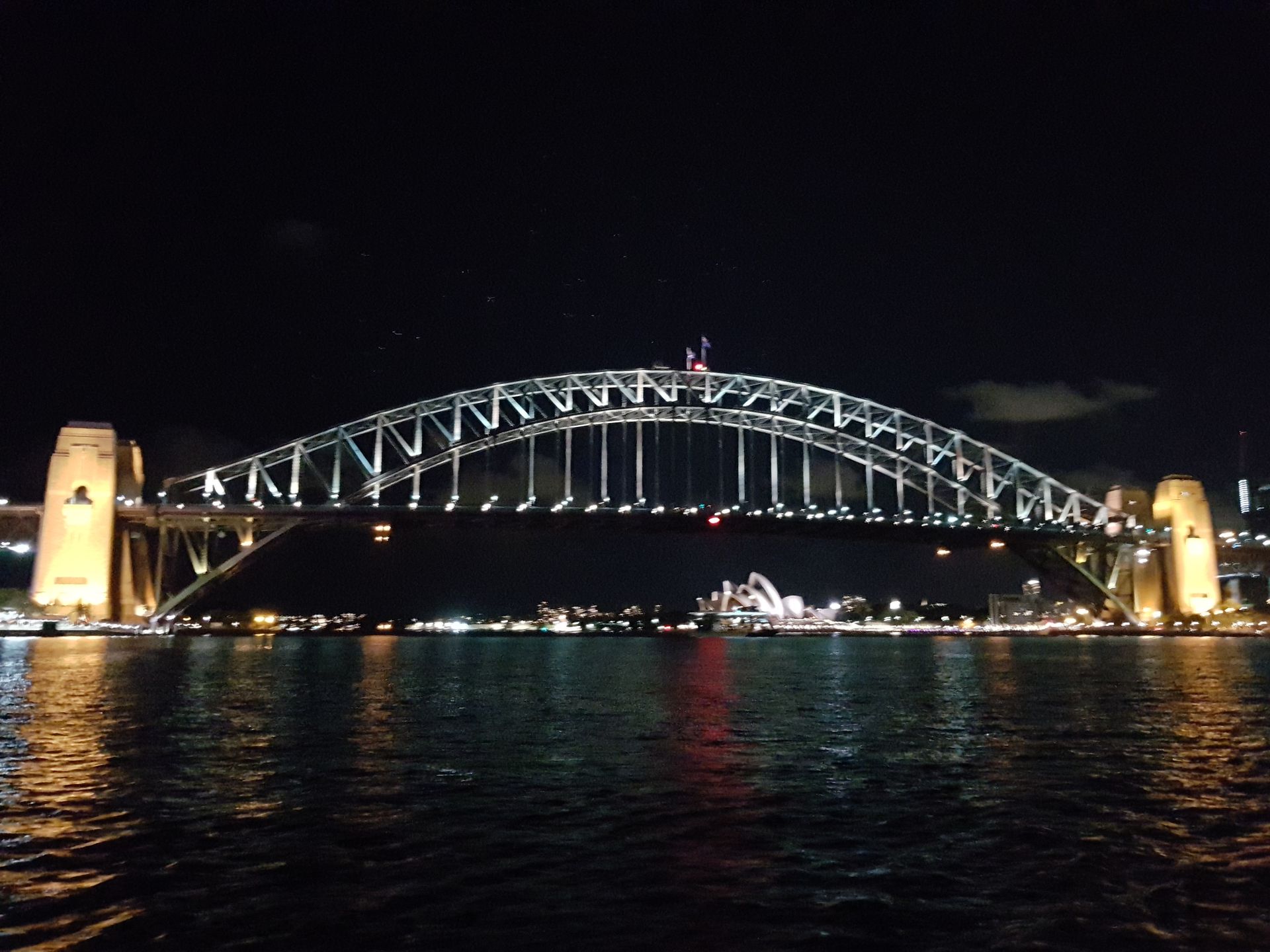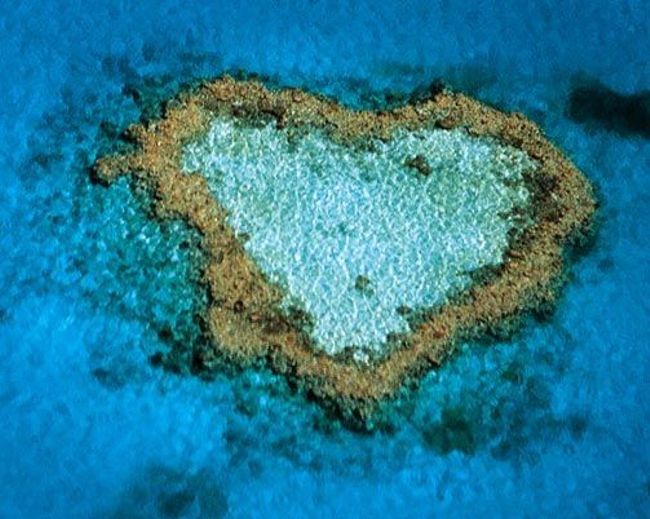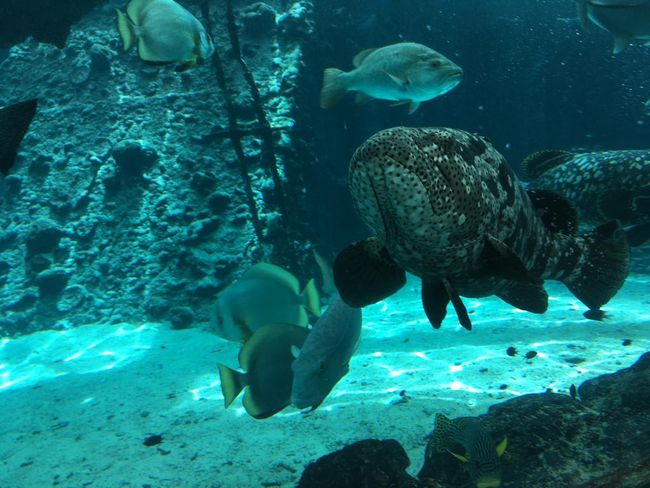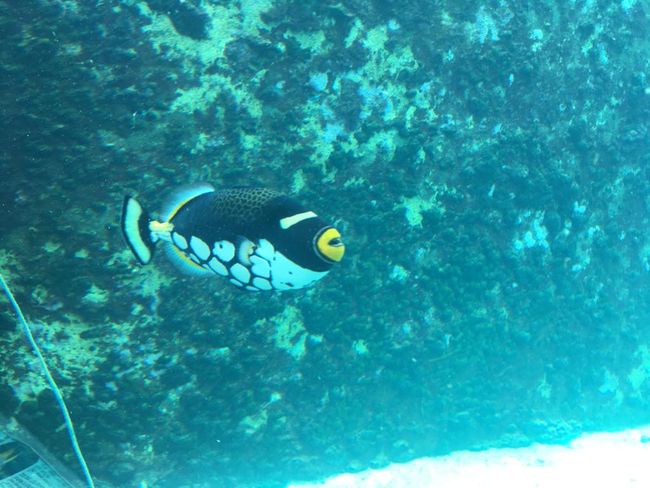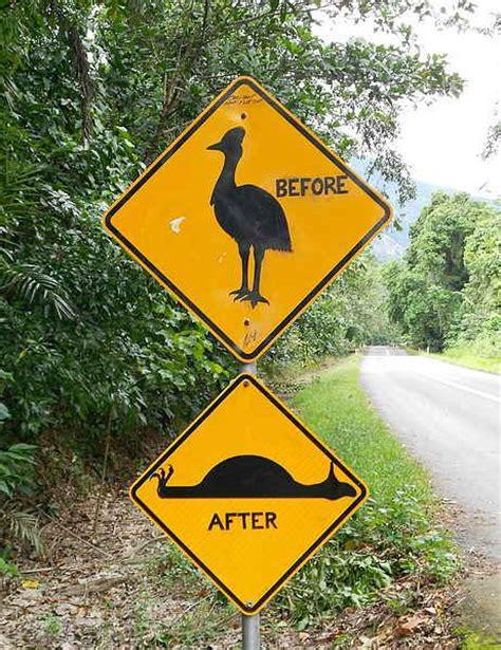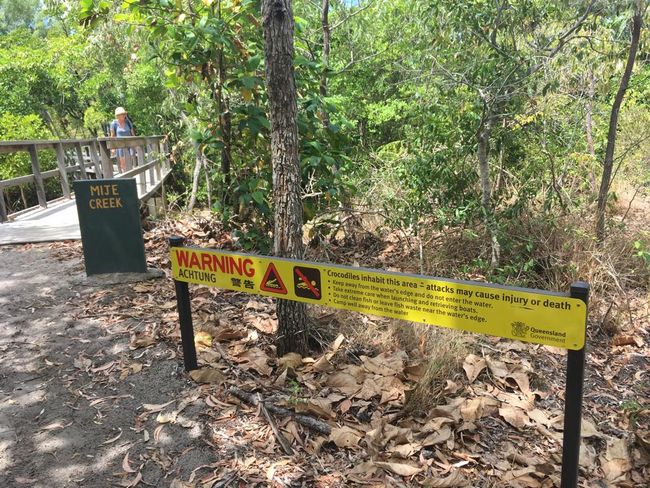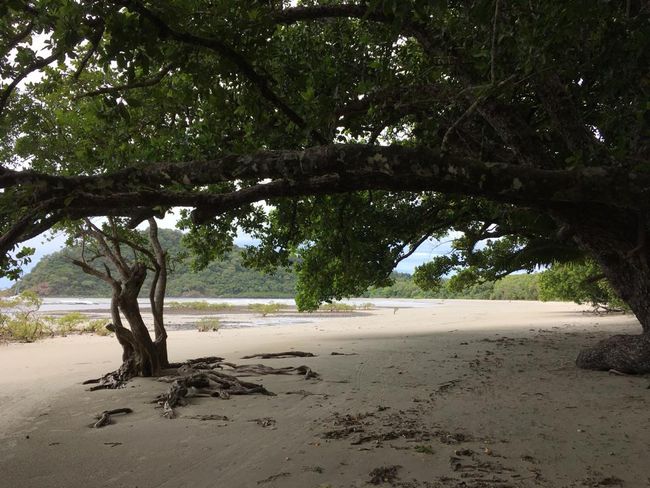18.09.-20.09.2018
ޝާއިޢުކޮށްފައިވެއެވެ: 23.09.2018
ނިއުސްލެޓަރ އަށް ސަބްސްކްރައިބް ކޮށްލައްވާ
The ferry takes us back to the mainland in Townsville. Because our journey to Mission Beach today is only 241 km, we still have plenty of time to visit 'Reef HQ Aquarium' in Townsville, an institution dedicated to the exploration of the Great Barrier Reef habitat. Many friendly volunteers are here, approaching us and explaining everything about fish, reef, and water hazards.
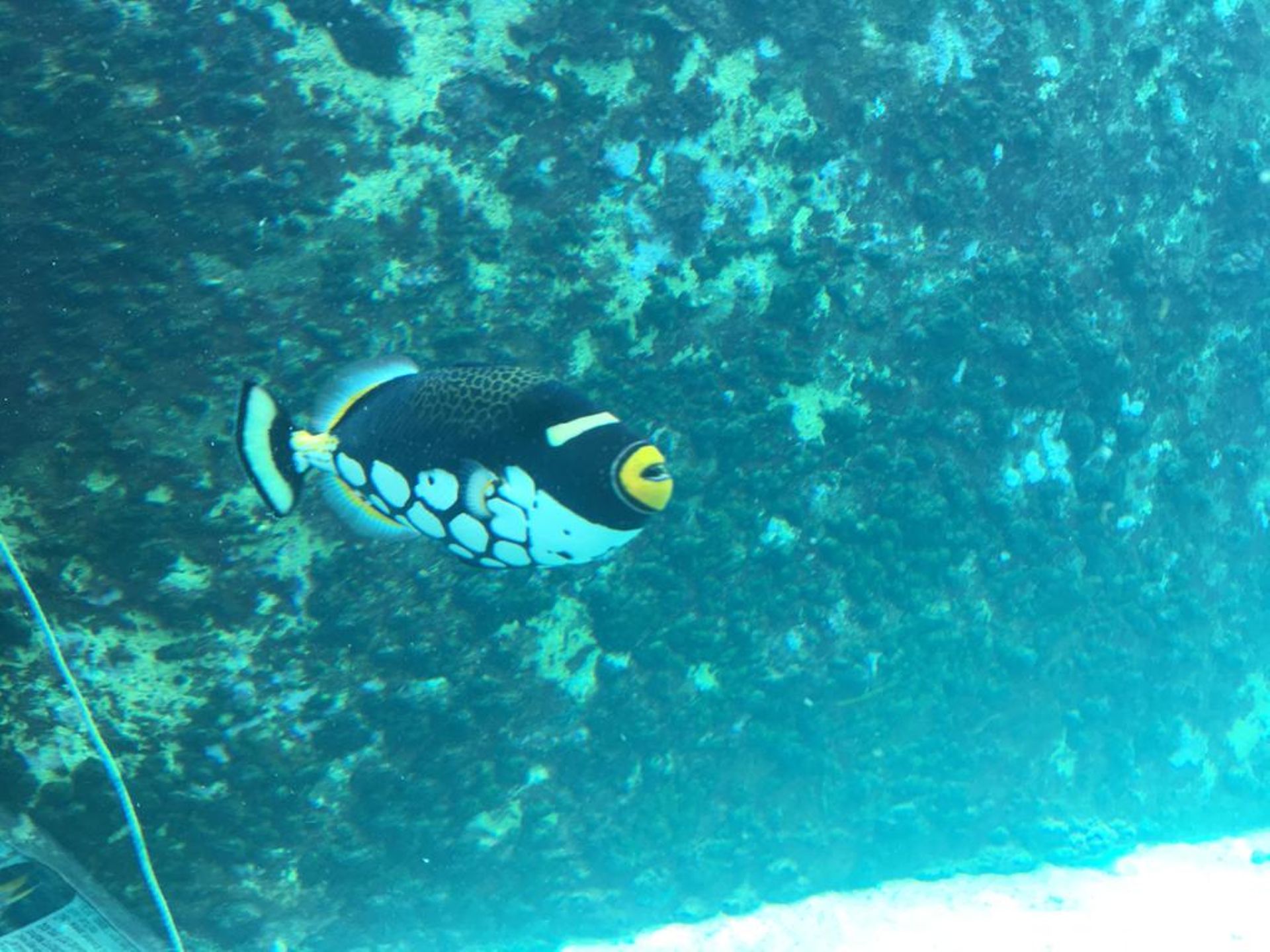
Now we also know why there is a vinegar bottle on the beaches. It serves as first aid for injured people after contact with venomous box jellyfish.
We are driving on Bruce Highway again. Towards Mission Beach and shortly before our destination, the signs start to slow down to avoid collisions with the cassowaries living here. Cassowaries are large flightless birds from the dinosaur era, but we won't see any today.
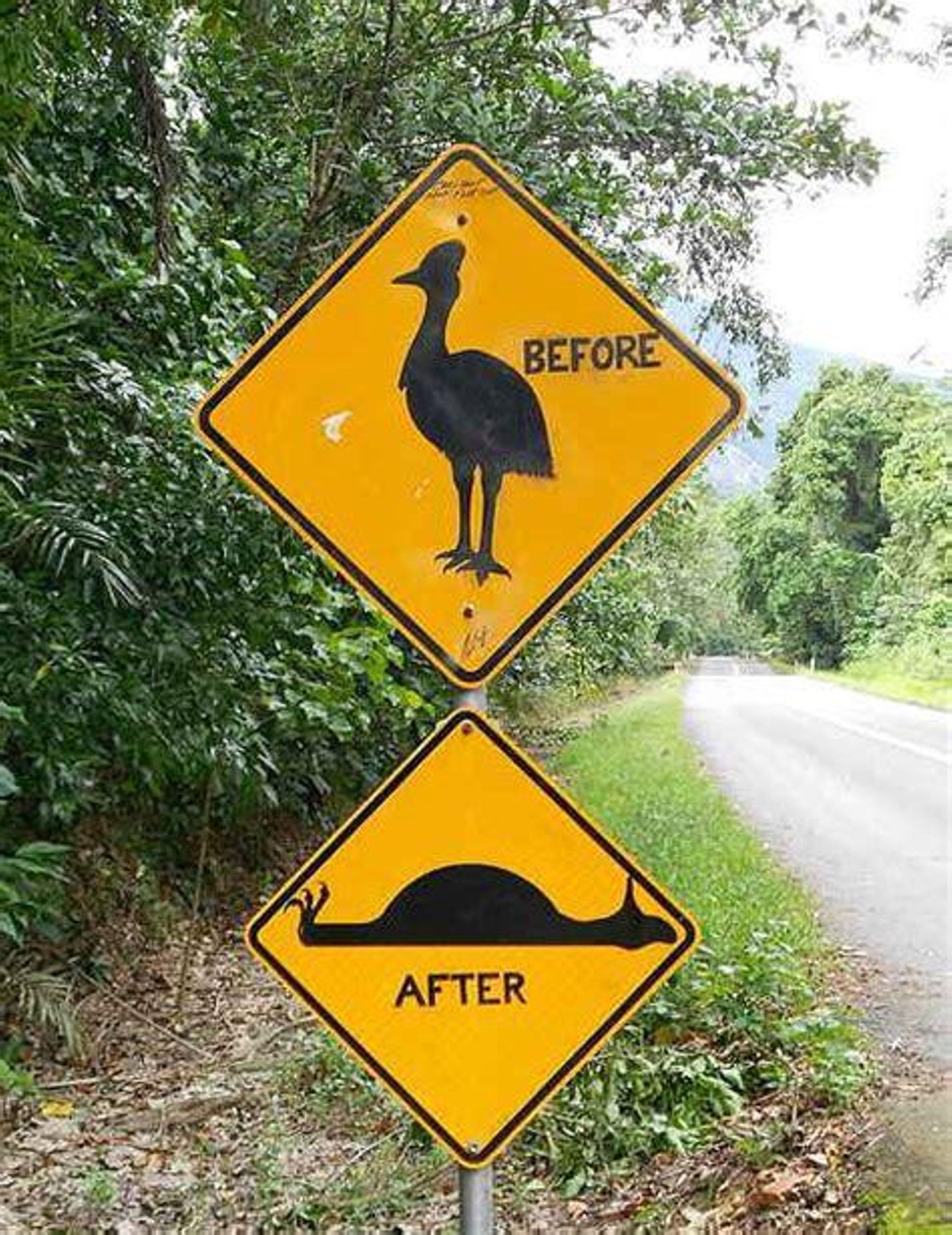
We are staying with the 'Sealords' Tim & Stephen, who have found their calling here since January 2018. Tim indulges us with champagne in the evening and freshly prepared fruit salad and scrambled eggs for breakfast, while Stephen places fresh flowers from the garden on the table on the veranda with a sea view. The sun is shining, the palm trees are rustling in the wind, and we enjoy breakfast to the sound of the sea. Strengthened, we walk along the beach,
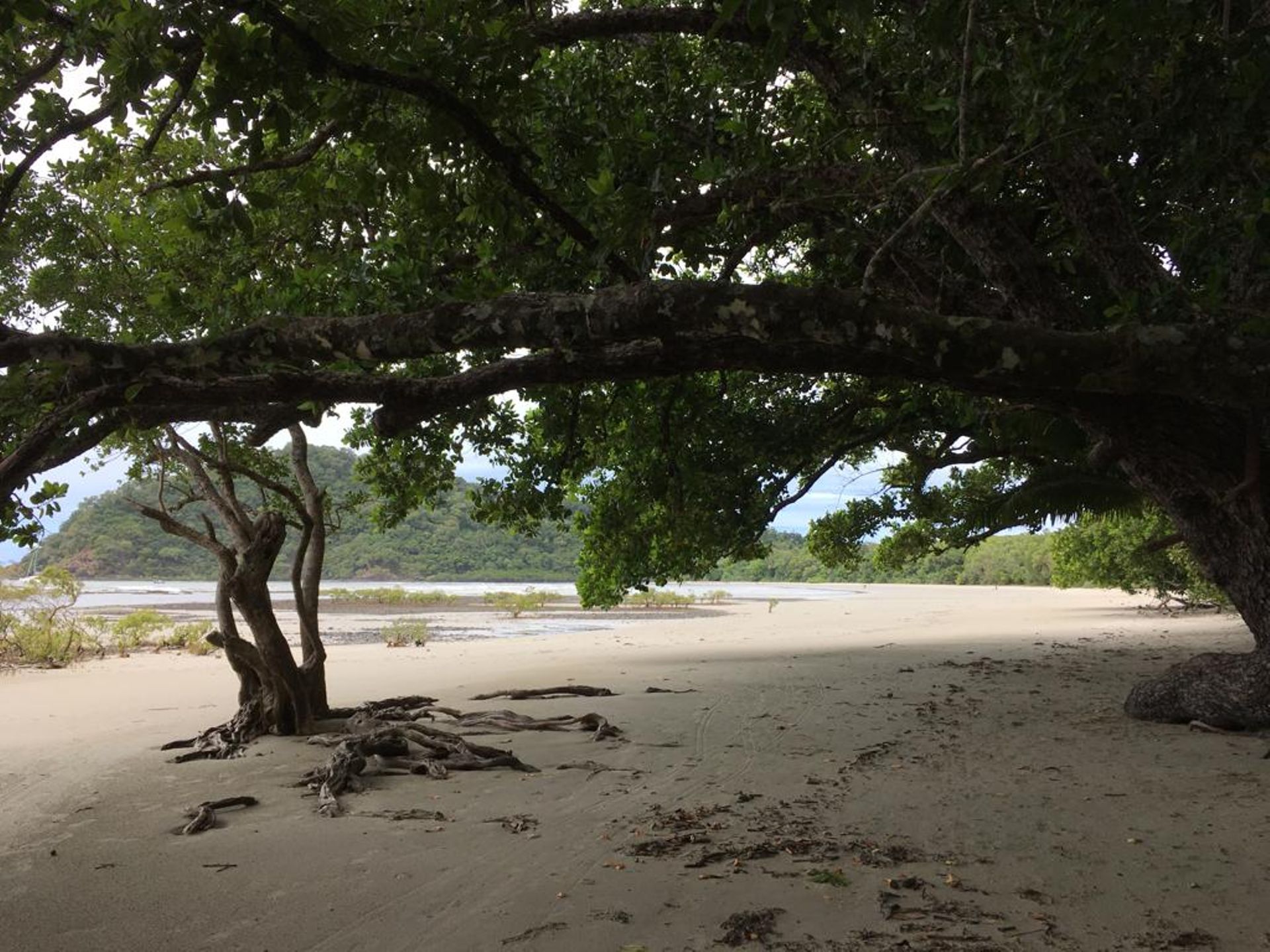
We walk along the Kennedy Walking Track, along the rocky coves, and stop at the lookouts to observe a sea turtle in the waves here and there. The track continues into the zone for the brave at Hull River!
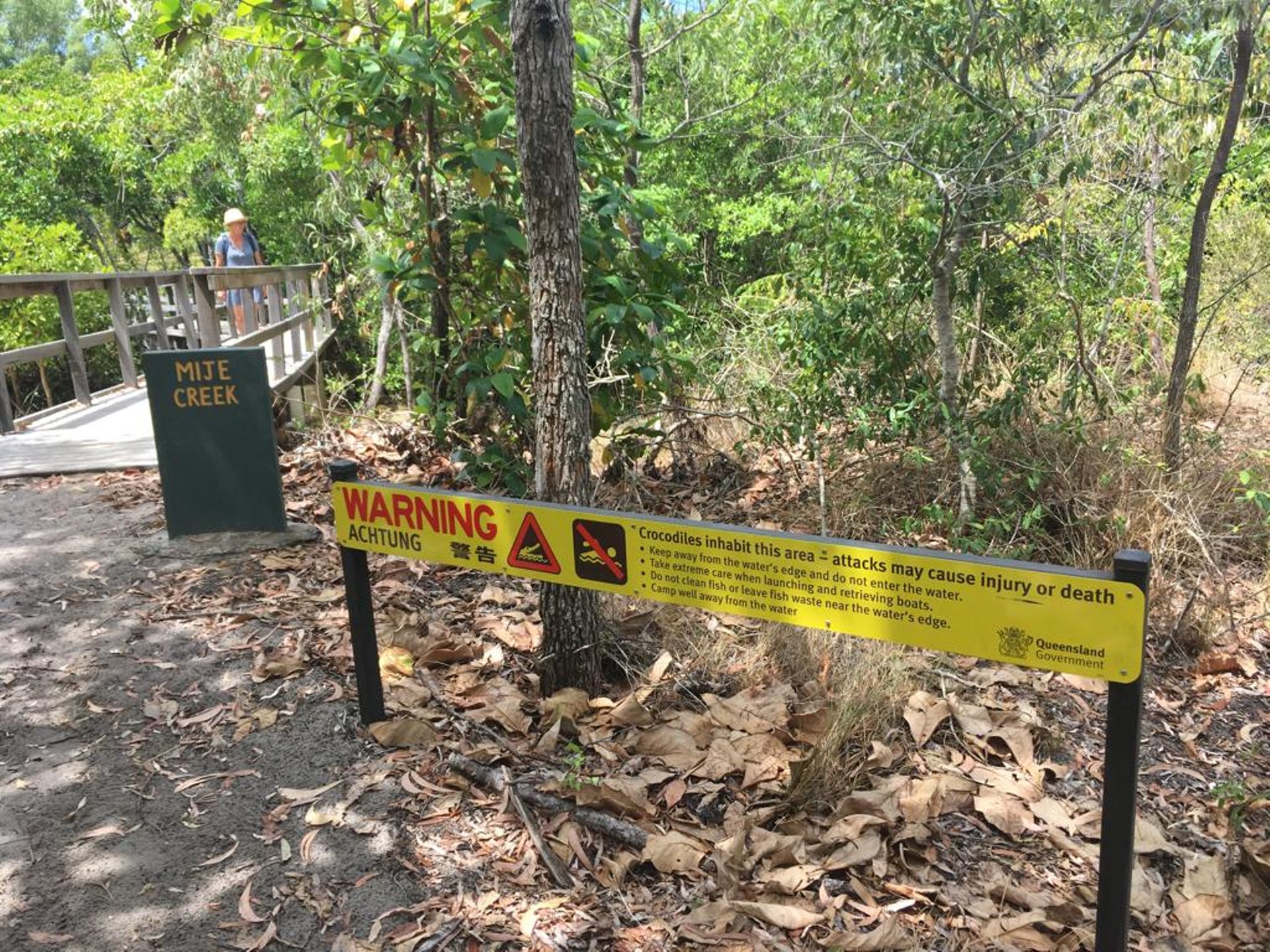
In the inconspicuous riverbed, more veterans from the Stone Age like to hang out in the mangrove forest between fresh and saltwater in the warm sand.
We don't find any of the terrifying lizards.
Luckily - mission impossible.
Back at our B&B, Tim is already looking forward to us, treats us to a welcome drink, and we sit on the veranda with grapes and cheese until late into the night. No cassowary passes by anymore - and no crocodile enjoys itself in the pool anymore.
Summary: 0 crocodiles; 0 cassowaries; hospitality to the max;
But: Why is the rainforest called that?
ނިއުސްލެޓަރ އަށް ސަބްސްކްރައިބް ކޮށްލައްވާ
ޖަވާބު (2)
Mi
Wow 👏 ich bin echt begeistert und beeindruckt. Richtig spannend Eure Berichte und man bekommt das Gefühl man wäre mit dabei :-) was ich auch gerne wäre ;-) viel Spaß und viele neue Abenteuer weiterhin. Das ist ja wahrhaftig wie im Paradies :-) liebe Grüße aus der Schweiz 🇨🇭 Miriam Mi
Das Schild "Before" and "After" finde ich Ich ja spitze 🤗 hahahaaa 😂 